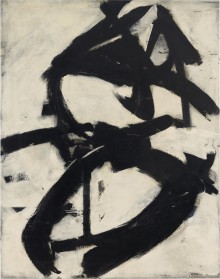David Smith
Timeless Clock 1957

Art © Estate of David Smith/Licensed by VAGA, New York, NY. Reproduction of this image, including downloading, is prohibited.
Audio Description (03:04)
Audio PlayerTrained as a welder and painter in New York, Smith created metal assemblages that challenged the traditional notion of sculpture as something carved or modeled. Timeless Clock exemplifies Smith’s skill and attention to detail. Working at an intimate scale with a precious metal, Smith imbued this frozen timepiece with the complexity and precision of fine jewelry, yet its elaborate open fretwork retains the spontaneity of drawing in air.
Timeless Clock was once in the personal collection of William Rubin, who was named Chief Curator of Painting and Sculpture at the Museum of Modern Art in New York in 1969. For many years, Rubin was an important guide for the Andersons, offering a direct link to the New York art scene of the sixties and seventies.
-Sidney Simon, PhD ‘18
 Learning Guide
Learning Guide
Jennifer Field, PhD
Executive Director of the David Smith Estate
In Timeless Clock, Smith welded together silver rods of varying lengths and widths onto broken axes that transgress the rough perimeter of an open circle.
The result is a complex arrangement of shard-like projections into space – like an exploded clock, perhaps, that can no longer tell time.







